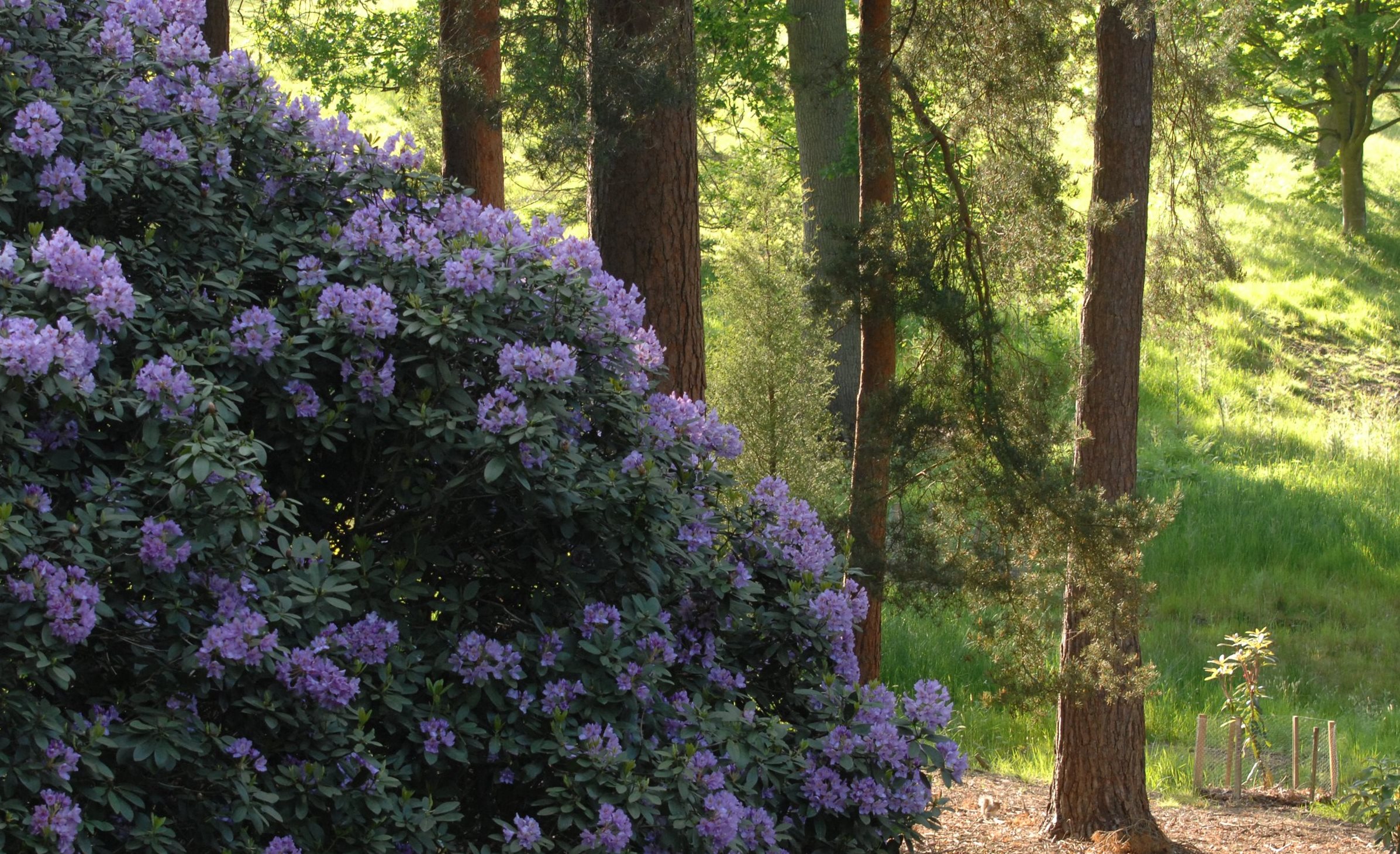This section sets out the policy to be operated by the forestry authorities and private woodland growers in Great Britain concerning the collection and removal from woodland of foliage from host plants of Phytophthora ramorum and P. kernovii.

Host plants are species which can be infected by these organisms, such as Rhododendron ponticum (pictured). The forestry authorities in Great Britain are the Forestry Commission in England, Scottish Forestry and Natural Resources Wales.
The policy operates whether the foliage is being collected for sale or otherwise, and is effective from the date of publication until further notice. It applies to woodland owners and managers in Great Britain on whom a Statutory Plant Health Notice (SPHN) has been served under the Plant Health (Forestry) Order 2005 to prevent the spread of P. ramorum or P. kernovii. However, all woodland owners are strongly encouraged to apply it as best practice to minimise the risk of spreading disease into or out of their woodlands.
The principal host plants of concern are rhododendron species, especially Rhododendron ponticum, but also other sporulating hosts, including viburnum and camellia. (Sporulating hosts are plants which, when infected, produce the spores which spread the disease). R. ponticum can be infected by P. ramorum and P. kernovii, and when infected it can produce large numbers of spores, or inoculum. These spores can transmit both pathogens to a wide range of other trees and shrubs.
The main measure to control the resulting diseases is to remove and destroy infected rhododendron wherever it is found. Care must therefore be taken to avoid accidental spread of the disease through the collection and removal of foliage for decorative or other uses.
The plant health authorities have divided Great Britain into three disease management zones, as follows:
The zone boundaries are not intended to be absolute: woodland managers, other than where an SPHN is in force, should always exercise judgement and take into account the disease situation in the local area when deciding whether to allow foliage collection from their woodland.
The boundaries of the zones are kept under review, and may be modified at any time depending on the outcome of surveys and confirmation of new infected sites.
A map showing the zone boundaries is available from our main resources’ page about P. ramorum.
The following restrictions apply to the collection and removal of foliage of P. ramorum and P. kernovii host plants growing in woodland areas, except where restrictions have already been imposed by an SPHN.
All people cutting and removing foliage from woodland should be made aware of the biosecurity measures which we recommend or require for cleaning and disinfecting footwear and cutting equipment before leaving any site. This should apply even if restrictions are not in place. The biosecurity protocols should therefore be regarded as good practice by all engaged in these operations.
Vehicle access to sites should be limited to the minimum necessary, and operators should be encouraged to remove soil and plant debris from wheels and tyres before leaving the site.
Woodland managers in Zone 1 are advised to erect notices informing visitors to the forest that P. ramorum and/or P. kernovii has been found in the area, and warning against taking cuttings from any plants or trees in the woodland.
Full details of the biosecurity measures required or recommended on phytophthora sites are available in Section 3 – Biosecurity measures.
Next – Section 8: Financial support for woodland owners affected by ramorum disease
See also our main resources’ page on P. kernovii.